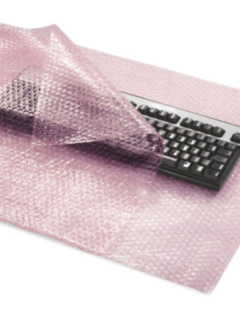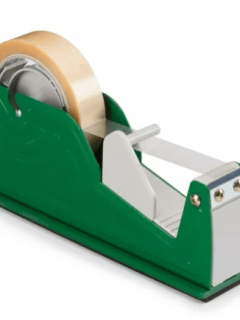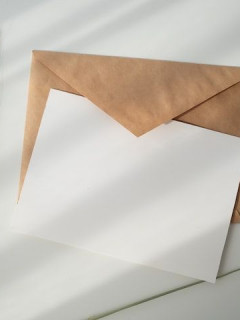The individual pages, which form the basis of a photocopied book, thesis or textbook, must somehow be joined together to form a whole (i.e. a book in its full glory). This will require what is known as document binding – a method using a binding machine. This tool is found in photocopying shops, offices, offices and other places where typical office work is carried out. What is document binding step by step? Is it possible to bind documents without a binding machine?
How to bind documents – types of binding
Document bindingis a bookbinding technique, which involves binding loose sheets of paper together by placing them on special clamping strips (the edges are joined together using the so-called binding). There are several types of binding. These include plastic, metal, channel, thermal, wire and plastic spiral binding.
What is plastic binding?
Plastic binding is the most popular solution in copy centres. It allows for the binding of a large block of sheets of paper (maximum width 30mm). After the process, the plastic comb can be opened and closed again. The sheets of paper are perforated (some people consider this a disadvantage) and frequent inspection of the bound documents may lead to damage.
What should you know about metal binding?
Metal bindingis done using a double metal spine, with a closure, produced in sections or spools as an open comb. It is not possible to reopen and close a document so bound. This technique is most commonly used in industrial printing, e.g. for binding wall and book calendars, notebooks, ring binders.
What is thermal binding of documents step by step?
Thermal binding is done with heat. No plastic spines or metal channels are used. The method involves placing papers in a binding machine, where the sheets and cover are glued together (special glue), necessarily under high temperature. Thermal binding takes a short time (just a few tens of seconds) and produces aesthetically pleasing and elegant sheets. In contrast to other techniques, it is a permanent method – the document cannot be un-binded.
How to bind documents? Other methods
Channel binding is based on clamping the sheets and covers in a special metal channel. The effect is an aesthetically pleasing page (the pages are neither punched nor glued), which is separated from the channel by a cover. Such documents can be reused after de-binding.
Wire binding is a fairly popular and durable technique, which enables the binding of up to 112 – 120 sheets of paper together. Metal spines are used here. When the sheets and cover are clamped together, the result is an aesthetically pleasing, sturdy document – the sheets can be turned 360 degrees, but cannot be removed.
Plastic spiral binding is based on the binding of a sheet of paper by means of a special screw spiral. A block up to 46 mm wide can be bound using this method.
Basic binding tools. How to bind documents using a binding machine?
The most important tool for binding is the binding machine. Other necessary elements are comb bars and covers.
The binding machine is a printing device with a characteristic appearance. With its help, a large number of sheets of paper can be perforated evenly and then the sheets can be mounted on a special comb. There are two types of binding machines to choose from:
- manual – requires the use of force when punching,
- electric – punches using electricity, without human intervention.
Before choosing a potential binding machine, it is worth considering what kind of files we will have to deal with (in terms of their size). They usually have specific standards at which they work correctly – different deviations from the standard can cause problems in binding. In addition, binding machines have special drawers where the waste (small pieces of paper) from the binding process land. It is very easy to dispose of the clippings – once the process is complete, simply open the drawer and dispose of the contents in the bin.
Most binding machines are equipped with additional anti-skid pads, preventing the device from moving during binding – regardless of the amount of pressure exerted on it.
In professional bindery tools, it is possible to adjust the spine strips and adjust the punched areas on the sheets to match.
Other binding tools. Combs and crimps
Comb strips (combs) are special accessories that bind all the binding paper sheets together. They take the form of distinctive, multi-coloured strips with rings. They are applied with a binding machine to the punched areas. They must be clamped very tightly and precisely so that no sheet of paper falls out of the document. The combs are made of plastic or metal and come in a variety of colours and sizes.
An alternative is the slightly more expensive clip bars. Although they hold far fewer pages, in many cases they are a practical and cost-effective solution.
Binding foils and covers
Binding foil is an accessory that protects bound documents from damage. It can vary in thickness, but the thicker version is generally used. The foil is punched and placed on top of selected sheets of paper, and then bound. The first page of the document is then protected. The last page of the binded file must also be sealed with a protective covering – the so-called binding cardboard. This is an ordinary piece of cardboard of the appropriate size.
Binding covers (letter wraps) are not a necessity, although they are an aesthetic addition to the document. They usually have a stiff profile – their purpose is to stiffen the entire file and protect the contents from crushing, tearing and other damage.
Where do you store bound documents?
Bound documents are often stored in company archives or in the home office. Thanks to a binding machine, an entrepreneur does not have to worry about unmanageable files of paper scattered everywhere. Find out how to store documents in a warehouse, home office or archive. In the meantime, you also need to acquire knowledge of how to secure documents for mailing – you won’t miss out on sending important files to accounting.
Is it possible to bind without a binding machine?
If you don’t have time to go to a photocopy shop, but need to bind a bundle of sheets of paper into a single ‘booklet’, try binding them without a binding machine. This is possible both on a ready-made base (previously bound documents that have been de-binded) and one made from scratch (untouched documents).
The elements you need to prepare are: a metal binder, a decorative card (this will serve as the front cover), a small spring, a punch, a pencil.
The decorative card should be joined to the binda. The distance between the edges and the holes must be equal (trace this with the spring, marking with a cross). The most difficult stage is the punching. Use a plier punch (preferably) or a classic, office punch. Try to punch exactly through each centre marked with a cross. Once you have created your first hole, draw guide lines to extend the circumference of the circle. Continue in this manner for each subsequent hole – eventually you will have punched out the entire front side.
The next step is to punch a file of cards. You base it on the main page, marking the hole positions according to its layout. You place the hole-punched cards against each other, and flip the last page to the front. Put on the first binda, meanwhile gently but firmly squeezing the wire. Each bind off should be worn properly.
Although binding without a binding machine is possible, it is better to use this tool. You are then guaranteed a permanent, consistent binding. Do-it-yourself, makeshift document binding is used more for scrapbooking and other decorative paper techniques.













